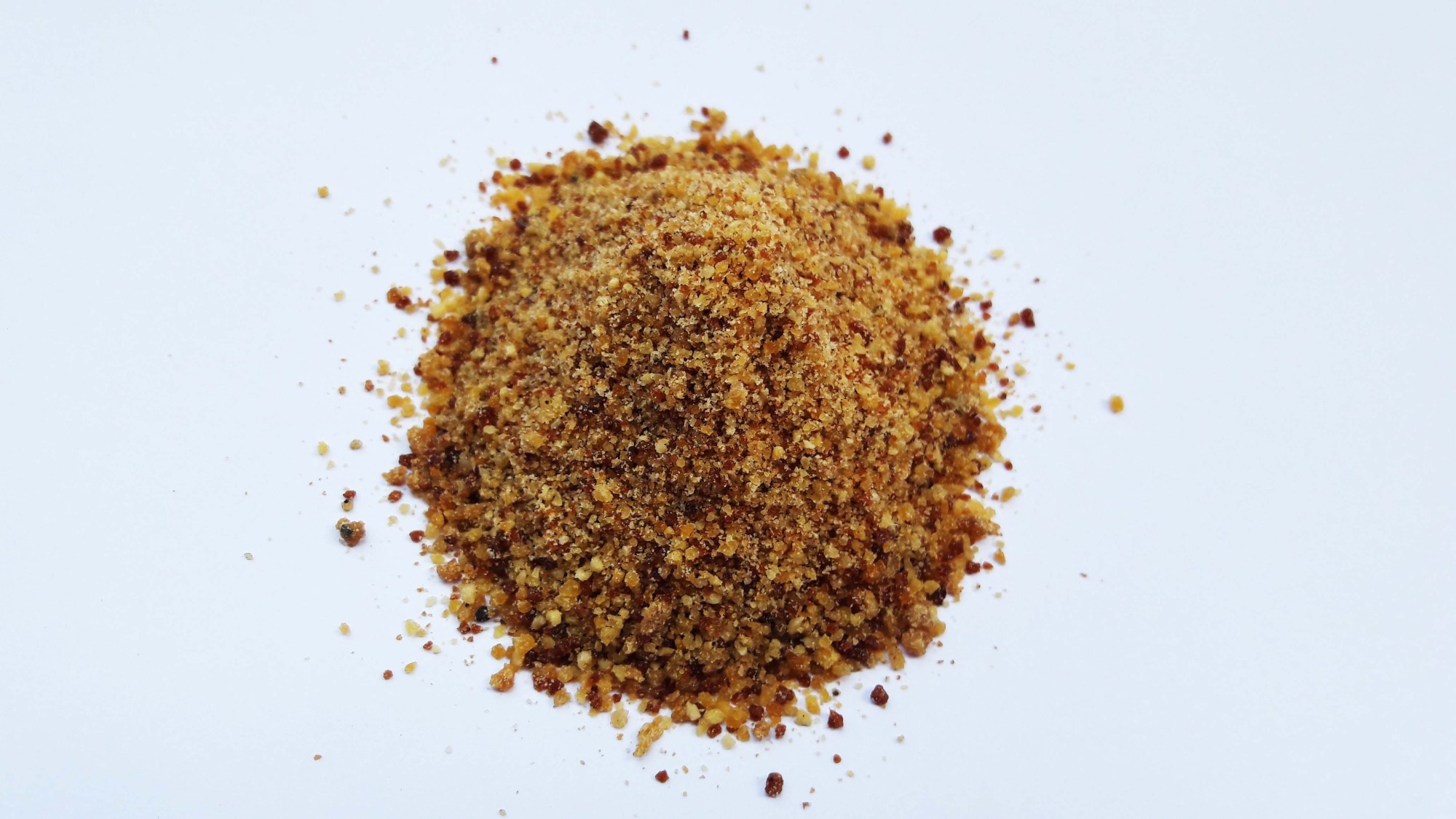Introduction
Botanical and chemical profile
Traditional medicinal uses
Digestive health benefits
Anti-inflammatory and immune-modulating properties
Antimicrobial effects
Broad-spectrum bioactivity in diverse organ systems
Culinary use and safety considerations
Challenges and future research directions
Exploration of gut microbiome interactions and long-term safety
References
Further reading
Asafoetida, a traditional spice and medicinal resin, is rich in bioactive compounds that support digestion, reduce inflammation, and exhibit antimicrobial activity. Emerging evidence highlights its potential in gut health, chronic diseases, and integrative medicine, though more clinical research is needed.
 Image Credit: Renu Jain / Shutterstock.com
Image Credit: Renu Jain / Shutterstock.com
Introduction
Celebrated in ancient Persian texts as a food of the gods, asafoetida has historically been revered for its potent aroma and therapeutic applications, particularly in digestive and inflammatory disorders.1 In India, asafoetida is highly valued for its ability to improve flavor and aid digestion.
In addition to its culinary use, asafoetida is gaining renewed attention due to its rich bioactive compound content, which may modulate gut health, reduce inflammation, and support immune function.1 This article reviews the botanical origins, traditional applications, and emerging role of asafoetida in modern health.
Botanical and chemical profile
Asafoetida is a dried oleo-gum resin extracted from the roots of Ferula assa-foetida L. and related Ferula species in the Umbelliferae (Apiaceae) family. Slicing the taproot produces milky latex, which transforms into a resin when exposed to air and is collected for use as a spice and medicinal component.1
Up to 64% of asafoetida is resin, whereas about 25% is gum, and essential oil comprises 3-17% of the spice. The resin fraction comprises ferulic acid, sesquiterpene coumarins, phenolic coumarins such as umbelliferone and isopimpinellin, flavonoids such as luteolin, and terpenoids.
Asafoetida essential oil is rich in volatile sulfur-containing compounds, such as 2-butyl propenyl disulfide and diallyl disulfide, that are responsible for the pungent odor. The oil also contains monoterpenes, such as α- and β-pinene, as well as trace flavor compounds (including vanillin in very small amounts). The gum portion includes various carbohydrates, including glucose, galactose, and rhamnose, as well as glycoproteins.2
Components such as ferulic acid, umbelliferone, and luteolin prevent lipid peroxidation and oxidative damage in hepatic and gastric tissues, whereas α-pinene, β-pinene, and isopimpinellin modulate inflammatory pathways. Moreover, ferulic acid, umbelliferone, α-terpineol, luteolin, α-pinene, diallyl disulfide, and vanillin inhibit microbial activity.2,3
Traditional medicinal uses
Ayurveda, Unani, and Middle Eastern health practitioners have historically used asafoetida to manage digestive issues such as indigestion, flatulence, colic, and abdominal bloating. For these indications, asafoetida was often administered internally as a powder or decoction and externally as a warm compress.
In Ayurvedic texts, hing is described as deepaniya (appetizer) and sanjna-sthapaka (restorer of consciousness), reflecting its central role in digestive and nervous system health.1,2
 Image Credit: Nila Newsom / Shutterstock.com
Image Credit: Nila Newsom / Shutterstock.com
In respiratory conditions like asthma and bronchitis, the volatile oils of asafoetida act as natural expectorants and bronchodilators. Experimental studies support these effects, showing that asafoetida extracts relax tracheal smooth muscle tissue, thereby easing breathing. The volatile components of the resin are expelled through the lungs, thereby enhancing its efficacy in conditions such as whooping cough and chronic bronchitis.2,3
In reproductive health, asafoetida has been traditionally used as an emmenagogue to regulate menstruation and relieve cramps. Animal studies, particularly on guinea pig ileum, have confirmed the smooth muscle relaxant activity of asafoetida, as its administration reduced contractions induced by histamine, acetylcholine, and potassium chloride. Oral administration of hot water extracts from the dried gum or root reinforces the antispasmodic, carminative, and expectorant effects of asafoetida.1,2
Classical formulations of asafoetida, like Hingashtak churna, are widely used to manage digestive and inflammatory conditions. In addition to gastrointestinal relief, experimental findings reveal vasodilatory effects, with aqueous extracts significantly lowering mean arterial blood pressure in rodent models.3
Digestive health benefits
Asafoetida stimulates the secretion of saliva, bile, and pancreatic enzymes to facilitate the breakdown of fats, proteins, and carbohydrates. By promoting bile flow and activating key enzymes like pancreatic lipase and amylase, asafoetida improves nutrient absorption and overall digestive efficiency.2
Traditionally known for its carminative and anti-flatulent effects, asafoetida may relieve bloating, gas, and abdominal discomfort. The anti-flatulent effects of asafoetida are attributed to reduced gas formation in the intestines and increased expulsion of trapped gas. According to a recent meta-analysis, asafoetida relaxes intestinal smooth muscles, which may relieve cramping and abdominal pain, especially in individuals with irritable bowel syndrome (IBS).4
By soothing the digestive tract and balancing gastric acidity, asafoetida may provide relief from constipation and regulate bowel movements while also reducing heartburn and acid reflux. Emerging research also suggests that the antimicrobial and anti-inflammatory properties of asafoetida could modulate microbial imbalances associated with functional gastrointestinal disorders.4
Anti-inflammatory and immune-modulating properties
Asafoetida exhibits potent anti-inflammatory activity by suppressing key mediators like tumor necrosis factor α (TNF-α), interleukin 6 (IL-6), and cyclooxygenase-2 (COX-2).
Ethanol extracts of asafoetida reduce oxidative stress by preventing reactive oxygen species (ROS) generation and inhibiting the expression of vascular cell adhesion molecule 1 (VCAM-1) and intercellular adhesion molecule 1 (ICAM-1) in TNF-α-stimulated human umbilical vein endothelial cells (HUVECs). These observations suggest that asafoetida disrupts nuclear factor kappa B (NF-κB) and mitogen-activated protein kinase (MAPK) signaling pathways, both of which are critical regulators of inflammation and immune responses.3,5
In one experimental study, a curcumin-asafoetida complex significantly reduced ulcer severity and oxidative stress, thus indicating synergistic benefits with other anti-inflammatory compounds like curcumin, the primary active ingredient in turmeric. The anti-inflammatory effects of asafoetida may benefit arthritis patients by potentially alleviating joint inflammation, stiffness, and swelling that result from chronic immune activation. Emerging evidence also supports neuroprotective properties, with reduced neuronal inflammation observed in experimental models of Alzheimer’s disease and multiple sclerosis.6,7
Antimicrobial effects
Asafoetida exhibits broad-spectrum antimicrobial activity. Non-polar extracts have been shown to inhibit Gram-negative pathogens such as Shigella flexneri and Salmonella typhimurium. Comparatively, resin-based extracts of asafoetida are effective against Gram-positive Staphylococcus aureus, Clostridium perfringens, and Enterococcus faecalis bacteria.1,2
Essential oils and methanolic extracts of asafoetida are also effective against dermatophytes, Microsporum gypseum and Trichophyton rubrum, yeasts like Candida albicans and C. tropicalis, as well as Aspergillus niger and aflatoxin-producing Aspergillus parasiticus fungi. These extracts also exhibit activity against protozoa like Trichomonas vaginalis.1,2
 Image Credit: mirzamlk / Shutterstock.com
Image Credit: mirzamlk / Shutterstock.com
Broad-spectrum bioactivity in diverse organ systems
In rodent studies, asafoetida extracts increased lifespan in a breast cancer model by 53% and significantly reduced the size and number of mammary tumors. These effects resulted from the induction of apoptosis, as well as reduced oxidative stress and suppression of abnormal deoxyribonucleic acid (DNA) synthesis, primarily through the activity of ferulic acid and flavonoids.1,3
In diabetic animals, aqueous extracts of asafoetida significantly reduced blood glucose levels and promoted wound healing through enhanced epithelial regeneration and angiogenesis.
In vitro neuroprotective effects have also been reported, as methanolic extracts protect cerebellar granule neurons from glutamate-induced toxicity. These findings were confirmed in a subsequent in vivo study, with asafoetida treatment supporting nerve regeneration and conduction, in addition to reducing neuroinflammation.8,9
Traditionally used to manage menstrual and fertility disorders, asafoetida can influence hormonal regulation. Animal studies suggest that asafoetida enhances progesterone secretion and, at high doses, may act as a contraceptive without triggering estrogenic activity.
Due to anti-flatulence and antispasmodic properties, asafoetida can be combined with ghee, milk, or honey in formulations that support hormonal balance, relieve menstrual cramps, and aid postpartum recovery.8
Culinary use and safety considerations
Asafoetida is used sparingly in Indian recipes to enhance the flavor of lentils, beans, and vegetables. In the United States, asafoetida is generally recognized as safe (GRAS) when used as a flavoring agent; however, its ingestion may cause allergic reactions or gastrointestinal discomfort, including nausea and diarrhea, in sensitive individuals.10
Although culinary use is considered safe, healthcare professionals do not advise high-dose medicinal use during pregnancy due to potential uterine stimulation. A 30-day study reported that 250 mg of asafoetida twice daily was well-tolerated; however, excessive intake may pose risks such as methemoglobinemia or neurotoxicity in rare cases.11
Challenges and future research directions
Although preclinical studies and traditional use highlight the therapeutic potential of asafoetida, robust clinical evidence remains limited to preliminary studies often conducted on small sample sizes with variable methodologies. Thus, larger and well-controlled human trials are required to elucidate the efficacy of asafoetida for the management of digestive and inflammatory conditions.11
The lack of standardized asafoetida extracts leads to variable concentrations of bioactive compounds, thereby limiting reproducibility, comparability, and clinical translation of research findings. To overcome these challenges, stabilizing quality control parameters and validated extraction methods would ensure consistency and reliability of these extracts while simultaneously mitigating the risk of adulteration or contamination.12
Exploration of gut microbiome interactions and long-term safety
Traditionally used in Ayurvedic, Unani, and Middle Eastern medicine, asafoetida may restore microbial balance and inhibit bacterial pathogens. However, the long-term effects, especially with medicinal doses, remain unclear, in addition to potential disturbances in gut flora and adverse effects among vulnerable subgroups.
As healthcare shifts toward natural, gut-targeted therapies, asafoetida offers promise as a time-tested, multi-targeted remedy. Continued research into its microbiome interactions and safety profile is essential for integrating this ancient spice into modern formulations with confidence.13
References
- Mahendra, P., & Bisht, S. (2012). Ferula asafoetida: Traditional uses and pharmacological activity. Pharmacognosy Reviews 6(12), 141. DOI: 10.4103/0973-7847.99948, https://pmc.ncbi.nlm.nih.gov/articles/PMC3459456/
- Amalraj, A., & Gopi, S. (2017). Biological activities and medicinal properties of Asafoetida: A review. Journal of Traditional and Complementary Medicine 7(3), 347-359. DOI:10.1016/j.jtcme.2016.11.004, https://www.sciencedirect.com/science/article/pii/S2225411016302863
- Moghadam, F. H., Mesbah-Ardakani, M., & Nasr-Esfahani, M. H. (2017). Effects of Oleo Gum Resin of Ferula assa-foetida L. On Senescence in Human Dermal Fibroblasts: - Asafoetida reverses senescence in fibroblasts. Journal of Pharmacopuncture 20(3), 213. DOI:10.3831/KPI.2017.20.025, https://pmc.ncbi.nlm.nih.gov/articles/PMC5633674/
- Hawrelak, J., Wohlmuth, H., Pattinson, M., et al. (2019). Western herbal medicines in the treatment of irritable bowel syndrome: A systematic review and meta-analysis. Complementary Therapies in Medicine, 48, 102233. DOI:10.1016/j.ctim.2019.102233, https://www.sciencedirect.com/science/article/abs/pii/S0965229919308775
- Mobasheri, L., Khorashadizadeh, M., Safarpour, H., et al. (2022). Anti-Inflammatory Activity of Ferula assafoetida Oleo-Gum-Resin (Asafoetida) against TNF-α-Stimulated Human Umbilical Vein Endothelial Cells (HUVECs). Mediators of Inflammation, 5171525. DOI:10.1155/2022/5171525, https://onlinelibrary.wiley.com/doi/10.1155/2022/5171525
- Gopi, S., Amalraj, A., Jude, S., et al. (2017). Preparation, characterization, and anti-colitis activity of curcumin-asafoetida complex encapsulated in turmeric nanofiber. Material Sciences & Engineering C. Material Biological Applications 81:20-31. DOI:10.1016/j.msec.2017.07.037, https://www.sciencedirect.com/science/article/pii/S0928493117321008?via%3Dihub
- Lakhan, S. E., & Kirchgessner A. (2010). Neuroinflammation in inflammatory bowel disease. (2010). Journal of Neuroinflammation 7(37). DOI:10.1186/1742-2094-7-37, https://jneuroinflammation.biomedcentral.com/articles/10.1186/1742-2094-7-37
- K, A., Sultana, A., & Rahman, K. (2017). A single-blind randomized comparative study of Asafoetida vs Mefenamic acid in dysmenorrhea, associated symptoms, and health-related quality of life. Journal of Herbal Medicine 9;21-31. DOI:10.1016/j.hermed.2017.06.003, https://www.sciencedirect.com/science/article/abs/pii/S2210803317300489
- Moghadam, F. H., Dehghan, M., Zarepur, E., et al. (2014). Oleo gum resin of Ferula assa-foetida L. ameliorates peripheral neuropathy in mice. Journal of Ethnopharmacology 154(1);183-189. DOI:10.1016/j.jep.2014.03.069, https://www.sciencedirect.com/science/article/abs/pii/S0378874114002736?via%3Dihub
- Davidsen, J. M., Cohen, S. M., Eisenbrand, G., et al. (2023). FEMA GRAS assessment of natural flavor complexes: Asafetida oil, garlic oil, and onion oil. Food and Chemical Toxicology 173, 113580. DOI:10.1016/j.fct.2022.113580, https://www.sciencedirect.com/science/article/pii/S0278691522007785
- Mala, K. N., Thomas, J., Syam, D. S., et al. (2017). Safety and Efficacy of Ferula asafoetida in Functional Dyspepsia: A Randomized, Double-Blinded, Placebo-Controlled Study. Evidence-Based Complementary and Alternative Medicine, 2018(1), 4813601. DOI:10.1155/2018/4813601, https://onlinelibrary.wiley.com/doi/10.1155/2018/4813601
- Jain, S., Srivastava, S. K., Agarwal, A., & Gupta, A. K. (2024). WHO guidelines for quality control of herbal medicines: From cultivation to consumption. International Journal of Pharmaceutical Chemistry and Analysis, 11(3):212-225. DOI:10.18231/j.ijpca.2024.031, https://ijpca.org/archive/volume/11/issue/3/article/22100
- Marchesi, J. R., et al. (2016). The gut microbiota and host health: a new clinical frontier. Gut 2016;65:330-339. DOI:10.1136/gutjnl-2015-309990, https://gut.bmj.com/content/65/2/330
Further Reading
Last Updated: Aug 19, 2025